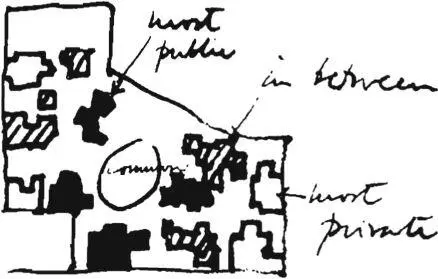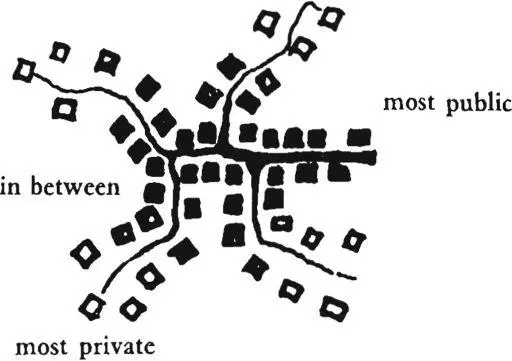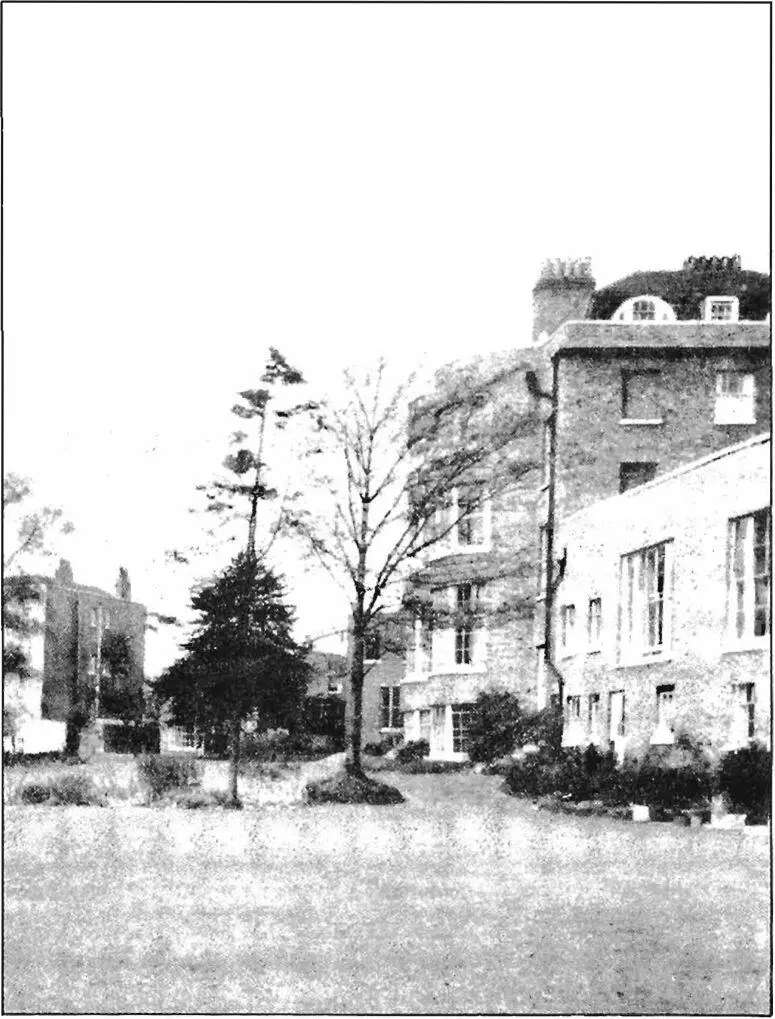Christopher alexander - A pattern language
Здесь есть возможность читать онлайн «Christopher alexander - A pattern language» весь текст электронной книги совершенно бесплатно (целиком полную версию без сокращений). В некоторых случаях можно слушать аудио, скачать через торрент в формате fb2 и присутствует краткое содержание. Жанр: Прочая научная литература, на английском языке. Описание произведения, (предисловие) а так же отзывы посетителей доступны на портале библиотеки ЛибКат.
- Название:A pattern language
- Автор:
- Жанр:
- Год:неизвестен
- ISBN:нет данных
- Рейтинг книги:3 / 5. Голосов: 1
-
Избранное:Добавить в избранное
- Отзывы:
-
Ваша оценка:
- 60
- 1
- 2
- 3
- 4
- 5
A pattern language: краткое содержание, описание и аннотация
Предлагаем к чтению аннотацию, описание, краткое содержание или предисловие (зависит от того, что написал сам автор книги «A pattern language»). Если вы не нашли необходимую информацию о книге — напишите в комментариях, мы постараемся отыскать её.
A pattern language — читать онлайн бесплатно полную книгу (весь текст) целиком
Ниже представлен текст книги, разбитый по страницам. Система сохранения места последней прочитанной страницы, позволяет с удобством читать онлайн бесплатно книгу «A pattern language», без необходимости каждый раз заново искать на чём Вы остановились. Поставьте закладку, и сможете в любой момент перейти на страницу, на которой закончили чтение.
Интервал:
Закладка:
The variation of different people along the extrovert-introvert dimension is very well described by Frank Hendricks and Malcolm MacNair in “Concepts of Environmental Quality Standards Based on Life Styles,” report to the American Public Health Association, February 12, 1969, pp. 11-15. The authors identify several kinds of persons and characterize each by the relative amount of time spent in extroverted activities and in introverted activities. Francis Loetterle has shed further light on the problem in “Environment Attitudes and Social Life in Santa Clara County,” Santa Clara County Planning Department, San Jose,
California, 1967. He asked 3300 households how far they wanted to be from various community services. The results were: 20 per cent of the households interviewed wanted to be located less than three blocks from commercial centers; 60 per cent wanted to be located between four and six blocks away; 20 per cent wanted to be located more than six blocks away (mean block size in Santa Clara County is 150 yards). The exact distances apply only to Santa Clara. But the overall result overwhelmingly supports our contention that people vary in this way and shows that they have quite different needs as far as the location and character of houses is concerned.
To make sure that the different kinds of people can find houses which satisfy their own particular desires, we suggest that each cluster of houses, and each neighborhood should have three kinds of houses, in about equal numbers: those which are nearest to the action, those which are half-way between, and those which are almost completely isolated. And, to support this pattern we need, also, three distinct kinds of paths:
1. Paths along services, wide and open for activities and crowds, paths that connect activities and encourage busy through traffic.
2. Paths remote from services, narrow and twisting, to discourage through traffic, with many at right angles and dead ends.
3. Intermediate types of paths linking the most remote and quiet paths to the most central and busy ones.
This pattern is as important in the design of a cluster of a few houses as it is in the design of a neighborhood. When we were helping a group of people to design their own cluster of houses, we first asked each person to consider his preference for location on the basis of extrovert-introvert. Three groups emerged: four “extroverts” who wished to be as near the pedestrian and community action as possible, four “introverts” who desired as much remoteness and privacy as possible, and the remaining four who wanted a bit of both. The site plan they made, using this pattern, is shown below, with the positions which the three kinds of people chose.
| 36 DEGREES OF PUBLICNESS |
|---|
 |
| In one house cluster: private homes , 'public homes , in-bet |
Therefore:
Make a clear distinction between three kinds of homes —those on quiet backwaters, those on busy streets, and those that are more or less in between. Make sure that those on quiet backwaters are on twisting paths, and that these houses are themselves physically secluded; make sure that the more public houses are on busy streets with many people passing by all day long and that the houses themselves are relatively exposed to the passers-by. The in-between houses may then be located on the paths half-way between the other two. Give every neighborhood about equal numbers of these three kinds of homes.

195 summary of the language
the smallest independent social institutions: the families, workgroups, and gathering places. The family, in all its forms3
| 75 - | THE FAMILY |
| 76. | HOUSE FOR A SMALL FAMILY |
| 77 - | HOUSE FOR A COUPLE |
| 78. | HOUSE FOR ONE PERSON |
| 79 - | YOUR OWN HOME |
the workgroups, including all kinds of workshops and offices and even children’s learning groups;
| 6 00 | SELF-GOVERNING WORKSHOPS AND OFFICES |
| 8l. | SMALL SERVICES WITHOUT RED TAPE |
| GO | OFFICE CONNECTIONS |
| OO OO | MASTER AND APPRENTICES |
| OO | TEENAGE SOCIETY |
| OO | SHOPFRONT SCHOOLS |
| 86. | children’s HOME |
| the local shops and gathering places. |
| CO | INDIVIDUALLY OWNED SHOPS |
| 00 CO | STREET CAFE |
| 89. | CORNER GROCERY |
| 90. BEER HALL |
| 91 . | traveler’s inn |
| 92 . | BUS STOP |
| XXIV |
TOWNS
Use this pattern to help differentiate the houses both in neighborhoods and in house clusters. Within a neighborhood, place higher density clusters along the busier streets—housing hill (39), kow houses (38), and lower density clusters along the backwaters—house cluster (37), row houses (38). The actual busy streets themselves should either be pedestrian streets (100) or raised walks (55) on major roads; the backwaters green streets (51), or narrow paths with a distinct path shape (121). Where lively streets are wanted, make sure the density of housing is high enough to generate the liveliness—
PEDESTRIAN DENSITY ( I 23) . . . .
I96
| 37 HOUSE CLUSTER** |
|---|
 |
■97
. . . the fundamental unit of organization within the neighborhood-IDENTIFIABLE NEIGHBORHOOD (14)-is the duster of 3
dozen houses. By varying the density and composition of different clusters, this pattern may also help to generate density rings (29), household mix (35)) and degrees of publicness (36).
❖ ❖ * 5*
People will not feel comfortable in their houses unless a group of houses forms a cluster, with the public land between them jointly owned by all the householders.
When houses are arranged on streets, and the streets owned by the town, there is no way in which the land immediately outside the houses can reflect the needs of families and individuals living in those houses. The land will only gradually get shaped to meet their needs if they have direct control over the land and its repair.
This pattern is based on the idea that the cluster of land and homes immediately around one’s own home is of special importance. It is the source for gradual differentiation of neighborhood land use, and it is the natural focus of neighborly interaction.
Читать дальшеИнтервал:
Закладка:
Похожие книги на «A pattern language»
Представляем Вашему вниманию похожие книги на «A pattern language» списком для выбора. Мы отобрали схожую по названию и смыслу литературу в надежде предоставить читателям больше вариантов отыскать новые, интересные, ещё непрочитанные произведения.
Обсуждение, отзывы о книге «A pattern language» и просто собственные мнения читателей. Оставьте ваши комментарии, напишите, что Вы думаете о произведении, его смысле или главных героях. Укажите что конкретно понравилось, а что нет, и почему Вы так считаете.












